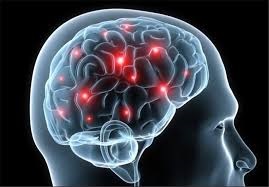Everyone has a different mixture of personality traits: some are outgoing, some are tough and some are anxious. A new study suggests that brains also have different traits that affect both anatomical and cognitive factors, such as intelligence and memory.
“A major focus of research in cognitive neuroscience is understanding how intelligence is shaped by individual differences in brain structure and function,” said study leader Aron K. Barbey.
For years, cognitive neuroscientists have tried to find relationships between specific areas of the brain and mental processes such as general intelligence or memory. Until now, researchers have been unable to successfully integrate comprehensive measures of brain structure and function in one analysis.
Barbey and his team measured the size and shape of features all over the brain.
“We were able to look at nerve fiber bundles, white-matter tracts, volume, cortical thickness and blood flow,” said Patrick Watson, a postdoctoral researcher. “We also were able to look at cognitive variables like executive function and working memory all at once.”
Using a statistical technique called independent component analysis, the researchers grouped measures that were related to each other into four unique traits. Together, these four traits explained most of the differences in the anatomy of individuals’ brains. The traits were mostly driven by differences in brain biology, including brain size and shape, as well as the individual’s age. The factors failed to explain differences in cognitive abilities between people. The researchers then examined the brain differences that were unexplained by the four traits. These remaining differences accounted for the individual differences in intelligence and memory.
“We were able to identify cognitive-anatomical characteristics that predict general intelligence and account for individual differences in a specific brain network that is critical to intelligence, the fronto-parietal network,” Barbey said.
The four traits reported in this study are a unique way to examine how brains differ between people. This knowledge can help researchers study subtle differences linked to cognitive abilities, Watson said.
“Brains are as different as faces, and this study helped us understand what a ‘normal’ brain looks like,” Watson said. “By looking for unexpected brain differences, we were able to home in on parts of the brain related to things like memory and intelligence.”
Source: Science daily
N.H.Kh

